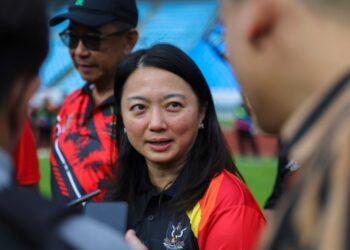South Korea’s Dominance in Archery: An Analysis of the Educational System
For the past four decades, South Korea has been a dominant force in the sport of archery at the Olympic Games, winning 27 of 45 possible gold medals since its debut in 1984. The country’s success is particularly notable in team events, where the Korean women have an unbeaten record of nine consecutive wins. This level of sustained success is unparalleled in world sports. The high level of competition within South Korea’s national team is often cited, with many archers stating that making the team is harder than winning an Olympic gold medal. This is a testament to the rigorous annual selection process and systems in place to ensure Korean excellence, which begin at a young age.

Kim Je Deok, at the age of 17, won two gold medals at the Tokyo Olympics, less than eight years after first picking up a bow in an after-school class.
He states “I started archery in the third grade of elementary school. After attending regular school classes in the morning, archery classes started in the afternoon. If there were upcoming competitions, I trained on the weekends, too.”
While not every school in South Korea has an archery club, there are around 900 archers practicing in elementary school clubs across the country in around 100 clubs. This model is similar to what’s used for other sports in Korea. However, while similar football, basketball and baseball elementary school teams have closed, archery has remained.
Je Deok adds, “As an elementary school kid, I shot around 300 to 500 arrows per day. These days I shoot around 300 to 400 and try to focus more on the result than the amount.”
According to the Korean Archery Association, most elite Korean archers begin training in the sport at around the age of nine or ten through after-school classes. They train from Monday to Friday for three to four hours per day, from the end of the school day until the end of the working day. The archery club serves as an after-school program for many young archers.
The approach in South Korea is different from European practices, where after-school clubs are more diverse, with participants trying many sports rather than focusing on one at such a young age. In South Korea, young archers spend a significant amount of time, three to four hours per day, on this single sport, in which repetition is fundamental, compared to perhaps a couple of hours a couple of times a week in other countries.
For example, if Kim Je Deok shot an average of 375 arrows a day, five and a half days per week, for the nine years before winning two Olympic golds, he would have shot a total of a million arrows.
This level of dedication and repetition, coupled with talent, is key to the success of Korean archers, not just in the Olympics but also in other international competitions.

Athens 2004 Olympic Champion, Park Sung-Hyun, one of the greatest female archers in South Korea, states “I started archery in the fourth year of elementary school. The school coach recommended I try as a club activity and everything started from there. It’s not accessible for all Koreans to try archery so it really was a coincidence that brought me here.” Archery clubs in schools are largely funded by the schools themselves. The equipment is provided to the archers and there are no entry fees for tournaments for school, university and club teams. Lee Jiho, an elementary school coach in Seoul, says “We try to build good basic posture so that the young archers can continue to the next level.”
The focus is not solely on sport, but also on care and development of the whole person. It’s not uncommon for archers to break halfway through practice to spend time together on homework. Du Gayeong, a middle school coach, adds “But in training, we focus also on raising students and helping them grow as a person.
Of the 900 elementary school archers, around 60% move on to a middle school archery club, and half of those continue to high school. By the time the education system reaches university, there are around 150 club archers.
For practical reasons, most of the schools with archery clubs are located close to each other. University archery clubs compete with those associated with professional teams, which are departments of companies or cities that continue to invest in this structure of sports performance past school age. Combined, there are about 60 adult teams in South Korea.
The system is built on quantity, the quantity of time and practice expended by a select group who start young. Very few of the archers who begin shooting at the age of nine or ten end up representing the country at the international level. In any given year, eight recurve men and eight recurve women are named to the Korean squad, with only half of those competing at the most prestigious events. They are selected after months of annual, rigorous trials, after years of progression through a system designed to funnel the most promising athletes to the top and create champions.
What can be learned from the South Korean education system for archery? It is clear that there is no magic formula for success. However, it is also important to note that the Korean archers who achieve phenomenal results are fortunate to have access to an elementary school with an archery club and to be part of a system that allows them to excel.
The recreational side of archery in South Korea is small but growing, as it is not the primary focus of the system which is built to create a winning national team. Additionally, the system does not end when an archer’s competitive career is over. Many retired archers, such as London 2012 Olympic Champion Ki Bo Bae, express interest in coaching to help develop the next generation of young archers. After 40 years of success, South Korea has a wealth of international expertise and experience that is being passed on to the next generation of aspiring athletes, thus continuing the cycle of producing exceptional archers.




















